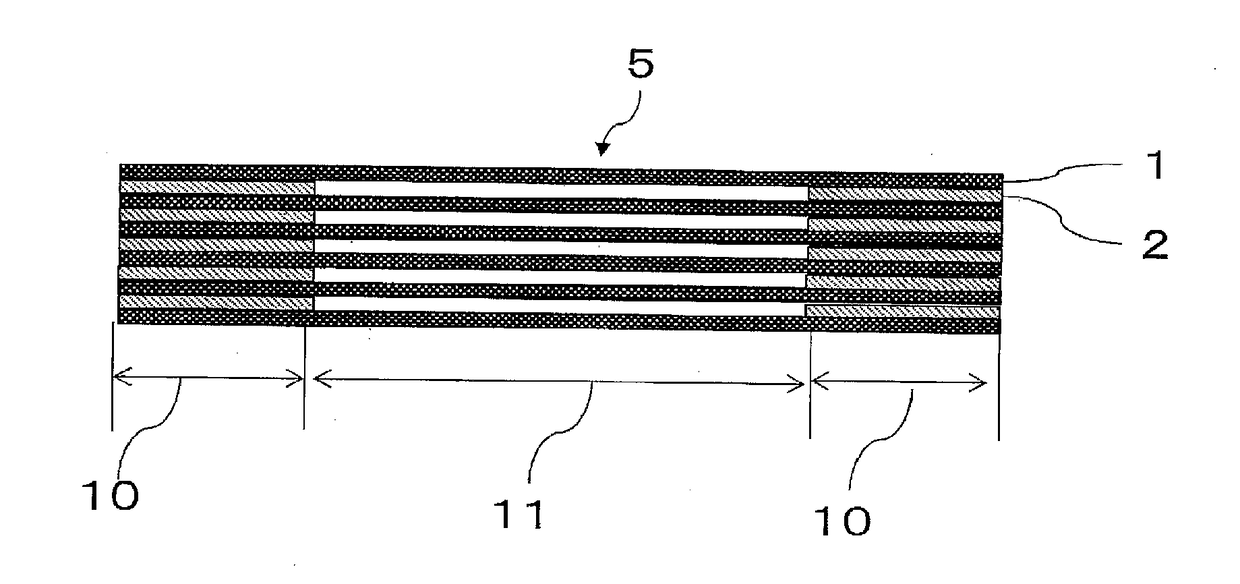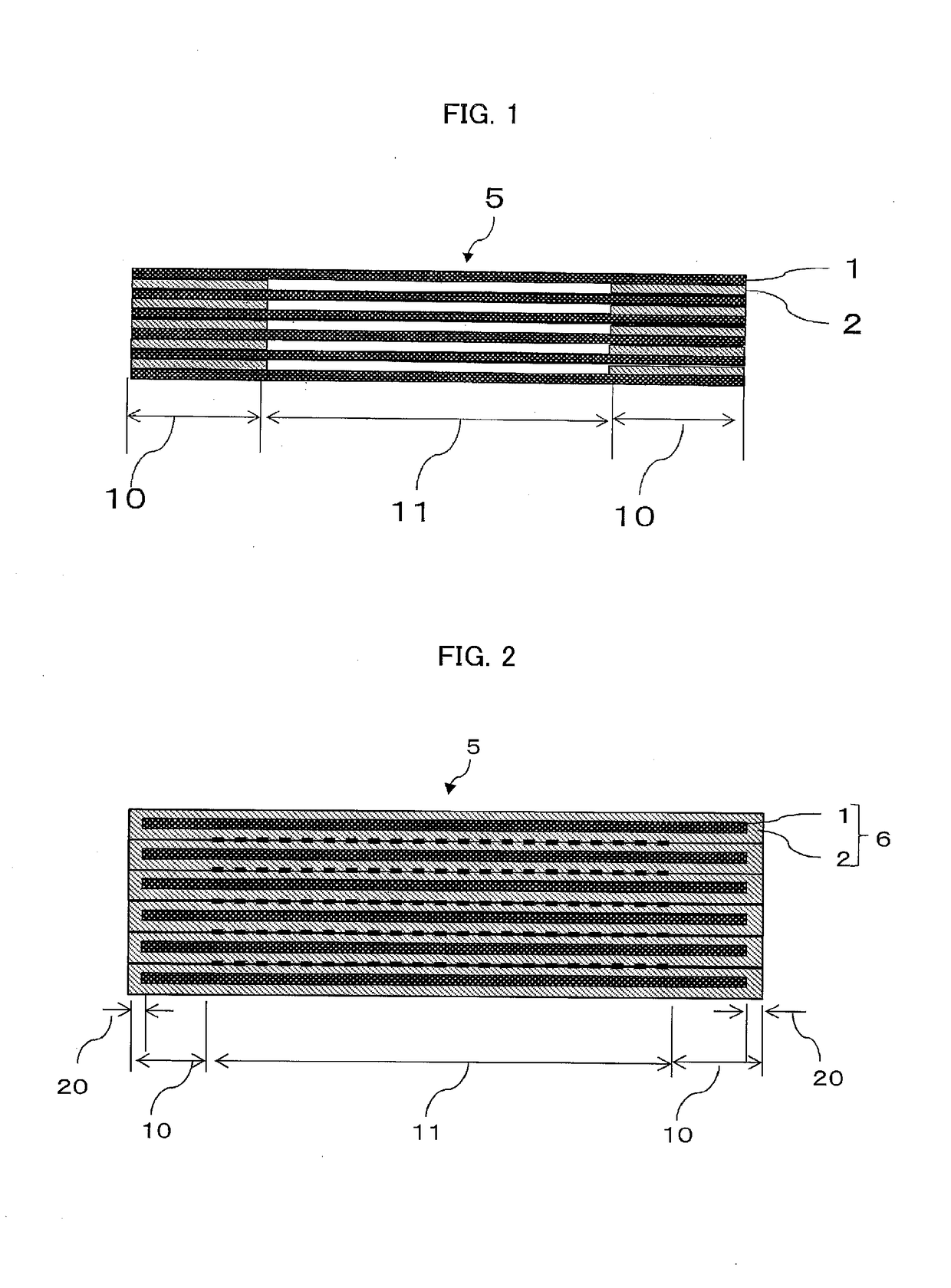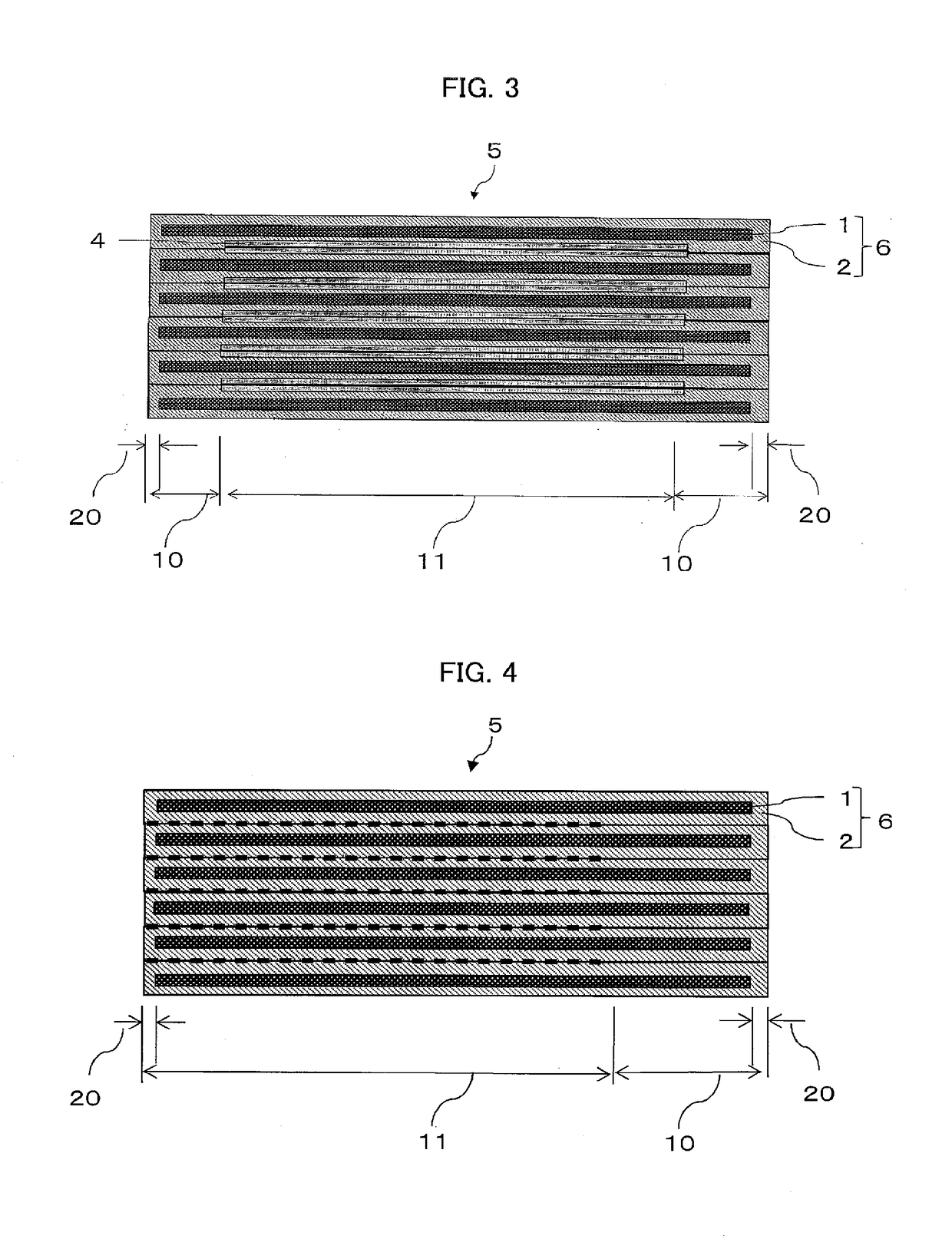Heat transport structure and manufacturing method thereof
a transport structure and heat transport technology, applied in the direction of lighting and heating apparatus, semiconductor/solid-state device details, laminated elements, etc., can solve the problems of increasing the amount of heat generated by electronic devices, increasing the weight of metal materials, and insufficient flexibility of metal materials, etc., to achieve good heat dissipation properties, and good light weight
- Summary
- Abstract
- Description
- Claims
- Application Information
AI Technical Summary
Benefits of technology
Problems solved by technology
Method used
Image
Examples
embodiment a
[0078]Embodiment A of the present invention is a thermal transport structure including at least two graphite sheets or at least two graphite composite sheets each including a graphite sheet and a covering layer, the covering layer covering at least part of (i) a surface and (ii) an edge (e.g., all faces including both surfaces and all edges) of the graphite sheet, the at least two graphite sheets or the at least two graphite composite sheets being stacked on top of each other as layers. The thermal transport structure includes: at least two fixing portions; and a thermally conductive portion between the fixing portions. In each of the fixing portions, the graphite sheets or the graphite composite sheets are kept in a state in which the graphite sheets or the graphite composite sheets are in contact with each other or bonded to each other (in other words, in each of the fixing portions, the graphite sheets or the graphite composite sheets are fixed in a state in which the graphite sh...
embodiment 1
[0085]FIG. 1 is a cross sectional view schematically illustrating an example of a thermal transport structure in accordance with Embodiment 1 of the present invention. Embodiment 1 is a thermal transport structure 5 in which at least two graphite sheets 1 are stacked on top of each other as layers. The thermal transport structure 5 includes at least two fixing portions 10 and a thermally conductive portion 11. The fixing portions 10 are preferably provided at least at a heat-receiving position and a heat dissipating position, respectively. The thermally conductive portion 11 is provided between fixing portions 10. Further, in each of the fixing portions 10, a bonding layer 2 is provided between graphite sheets 1.
[0086](Fixing Portion)
[0087]The fixing portions in accordance with an embodiment of the present invention are each a portion where the graphite sheets of all layers are bonded to each other via a bonding layer when the graphite sheets are viewed in a direction in which the g...
embodiment 2
Production Methods of Embodiment 2
[0177]A method for producing a thermal transport structure of Embodiment 2 of the present invention involves: a step of preparing a graphite composite sheet by forming a bonding layer on the entire surfaces of a graphite sheet; and a step of stacking such graphite composite sheets on top of each other and thereafter bonding the sheets together by applying pressure or applying pressure and heat.
First Production Method of Embodiment 2
[0178]A first method for producing a thermal transport structure of Embodiment 2 of the present invention includes: a graphite composite sheet preparation step of preparing a graphite composite sheet by forming a bonding layer on the entire surfaces of a graphite sheet; and a bonding step performed after the graphite composite sheet preparation step. In the bonding step, graphite composite sheets and non-bonding layers are alternately stacked on top of each other to form a multilayer body and thereafter pressure is applie...
PUM
| Property | Measurement | Unit |
|---|---|---|
| thickness | aaaaa | aaaaa |
| thickness | aaaaa | aaaaa |
| thickness | aaaaa | aaaaa |
Abstract
Description
Claims
Application Information
 Login to View More
Login to View More - R&D
- Intellectual Property
- Life Sciences
- Materials
- Tech Scout
- Unparalleled Data Quality
- Higher Quality Content
- 60% Fewer Hallucinations
Browse by: Latest US Patents, China's latest patents, Technical Efficacy Thesaurus, Application Domain, Technology Topic, Popular Technical Reports.
© 2025 PatSnap. All rights reserved.Legal|Privacy policy|Modern Slavery Act Transparency Statement|Sitemap|About US| Contact US: help@patsnap.com



